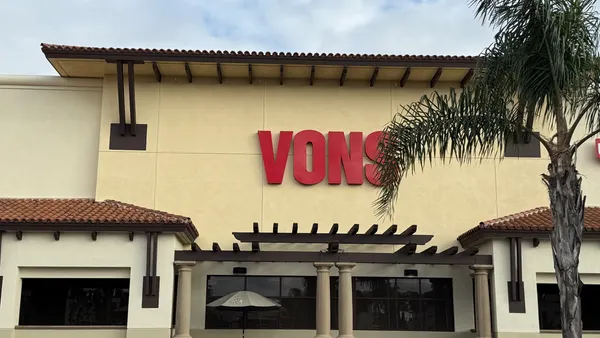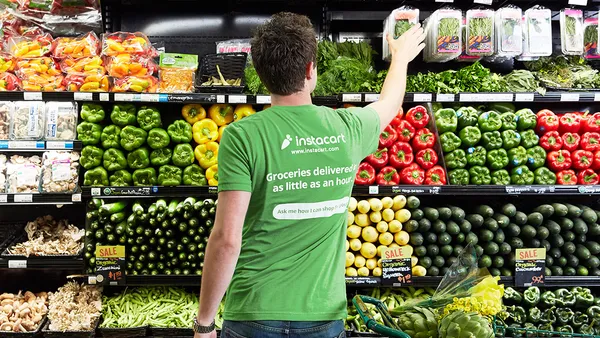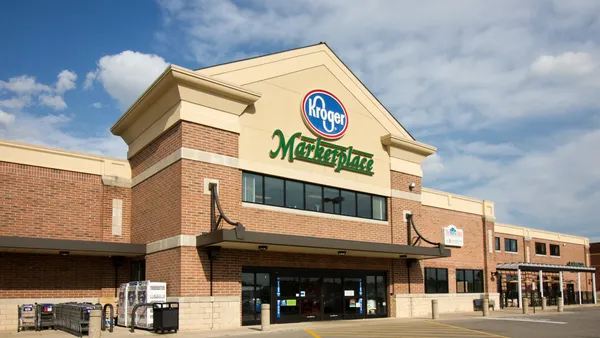Dive Brief:
-
A survey of 250 brand owners in the CPG industry found 75% expect to increase their spending on packaging during the next year, according to L.E.K. Consulting. That's up from the past two years, the company added, as 65% in 2018 and 40% in 2017 said they would be increasing spending. Almost one-third of them plan to hike their packaging budget by more than 10%.
-
The survey also found 90% believe packaging is crucial to their brand's success, L.E.K. Consulting said. As a result, 57% are developing packaging that's easier to open, 51% are working on more single-serve sizes and 49% are increasing placements in new distribution channels such as convenience stores.
-
"CPG brand owners recognize consumers want more convenience, and companies are looking to packaging to help provide it," Thilo Henkes, managing director and co-author of the study, said in a release. "This will entail some major changes to packaging, and CPGs are responding and investing."
Dive Insight:
CPG companies are investing in packaging to respond to a number of current trends. The first is the growth of premium products, where packaging format, quality, printing and appearance can give consumers the message that what's inside is a high-end item and worth the extra cost.
The L.E.K. research found 42% of the survey respondents have increased the number of premium products in their portfolios, while 35% changed their promotional approach and 32% expanded price-pack offerings.
Other factors pushing more investment in packaging include product personalization, which more than half of brand owners told L.E.K. they had ramped up during the past two years. Coca-Cola, for example, has been drawn positive attention for its decision to put people's names on their Coke cans. CPG companies also plan to launch at least 15% more SKUs in 2020 compared to 2018, requiring more effective and differentiated packaging.
Healthier products also have dictated different packaging, as have more environmentally friendly products, the survey found. The latter trend has prompted 85% of brand owners to change packaging materials in the past two years to make them more easily recyclable. In addition, online shopping has altered packaging plans, leading to containers less likely to break and which help keep products fresh.
Packaging innovations have been coming from Tetra Pak, which recently launched a cube design for dairy, liquids and juice products that cuts down on storage and transportation space. Other packaging options from the company include printable cartons with holographics and embossed surfaces and aseptic carton bottles made from mostly renewable materials.
“Package design often doesn’t get the attention or respect it deserves compared to other marketing tactics," Steve Lamoureux, senior vice president of product development for Nielsen’s Design Solutions, said in a statement. "One of the root causes for this oversight is that it’s difficult to attribute sales impact to package design.”
Still, there are countess examples of how packaging helped sales and brought attention to a product. Nestle's Lean Cuisine redesign in 2015 helped drive a sales increase of $58 million the following year after a long period of declines. Nutella used algoritims to create a limited-edition of collectible jars in a variety of eye-catching colors, shapes and patterns, including zig-zags, polka dots and splotches. The 7 million different package designs sold out within a month.
Renewable biomass also is being touted as a packaging solution, with Archer Daniels Midland, Cargill, Tate & Lyle and Ingredion recently forming a Plant Based Products Council to encourage use of such products. This move responds to the large number of millennials who want to cut down on their use of plastic packaging and are looking for alternatives.
So-called "smart packaging" is another area of increasing interest. A Deloitte survey of industry leaders found many are considering smart packaging to transform supply chains, integrity and customer experience. These packaging systems can monitor temperature, limit spoilage, extend shelf life, detect contamination and track a product from origin to final delivery. They can also play a role in reducing waste and enhancing sustainability — two elements that can bolster a product's appeal to consumers.
Echoing the recent L.E.K. survey findings, Deloitte also noted spending on packaging will be going up. It stands to reason because better packaging benefits both the consumer and the manufacturer. Packaging that is attractive to the eye, is made from certain materials or contains information the shopper is looking for will increase the chance of the individual buying that item, helping to boost sales or preventing the purchase of a competitor's product.











